Alyogyne huegelii, aka the Native Hibiscus, is a shrub that you see from time to time in nurseries but rarely see in home gardens. I’ve often found this quite surprising though as it’s has so many great things going for it.
More...
Growing Alyogyne huegelii
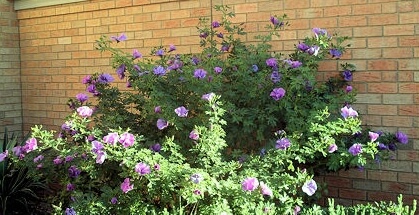
Alyogyne huegelii in flower.
It grows naturally in sandy and gravelly soils in arid areas of Western Australia. This is obviously is why Alyogyne huegelii is so drought tolerant. The one that I’ve got growing in my front yard amazed me last summer when we had five consecutive days where the temperature was 45°C.
I never water the plants in my front garden as I’ve decided that they have to survive on just rainfall so my Alyogyne huegelii hadn’t received any water for about a month before we got that hot weather.
During those five days every afternoon as it baked in the hot afternoon sun the ends of the branches drooped toward the ground as if the it was about to die. Late in the afternoon though as the sun went behind the house it would then recover and look as good as if it wasn’t ever affected. This went on for five days and each afternoon I wondered if it would survive.
Now about 7 months later it is in full flower and looking a million dollars.
Alyogyne huegelii Flowers
The flowers are purple but you can also get one’s that have white flowers as well. The flowers themselves though don’t last very long but it just keeps setting new flowers which are profuse so the flowering season does last for a few months from late winter right throughout spring.
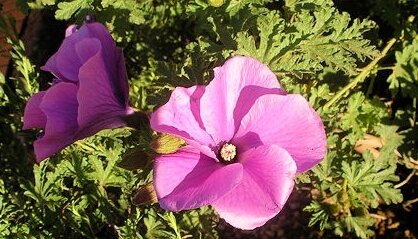
Alyogyne huegelii flowers
Other things you need to know about Alyogyne huegelii are that it does require reasonable drainage, it doesn’t like fertiliser with phosphorus and it grows really, really fast. After blue hibiscus flowers it’s best to prune it back fairly hard as it will then set vigorous new branches from old wood that will grow over summer (without much water).
This will ensure that your shrub will be more compact and will also reward you with lots and lots of flowers the following season. Pruning will also make it less susceptible to wind damage that can sometimes be a problem as the branches are fairly brittle. So it’s also best to plant it in a sheltered area.
Another interesting thing about my blue hibiscus was that the trunk actually split about a year ago. As you can see I’ve tied it up and it doesn’t seem to have gotten any worse. It will be interesting to see how it goes long term. The other option for me would be to just cut it back to a stump and then let it regrow.
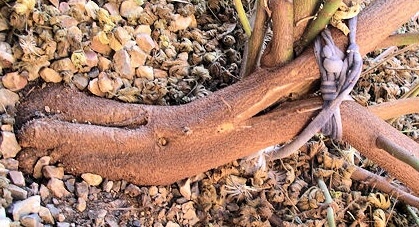
Alyogyne huegelii with split trunk. "It doesn't appear to have gotten any worse. So I'll leave it for now."
Alyogyne huegelii with split trunk. "It doesn't appear to have gotten any worse. So I'll leave it for now."
Alyogyne huegelii is also fairly easy to strike from cuttings. The plant in my garden was actually propagated by my mother using the propagating method described elsewhere in my blog.
So here you have it! Alyogyne huegelii is very drought tolerant, doesn’t need or like fertiliser as it will grow fast anyway, puts on a spectacular flowering display over spring and is really easy to grow. Just make sure you give your blue hibiscus reasonable drainage, prune it after flowering, plant in full sun it possible and keep away from strong winds.
Pruning Your Alyogyne huegelii
How to Prune Alyogyne huegelii and other Australian Native Plants.
From time to time I get emails about pruning Australian Native Plants and the feeling I quite often get is that there are many gardeners that have a misconception that Australian Natives don’t like to be pruned.
And this really couldn’t be further from the truth. Banksias, Grevilleas, Eremophilas and even Alyogynes all respond really well to a regular prune but I suppose for some gardeners it can be a daunting task as some are reluctant to go ahead and take the secateurs to a plant, just in case it doesn’t grow back.
Well I suppose the first thing to consider is that some plants should only be pruned lightly and not below the previous year's growth. While others can be pruned back to bare wood if need be and they will regrow again. So knowing which of these groups a particular plant fits into can be very important if you want get the most out of pruning your plants and probably the best way to find out is this.
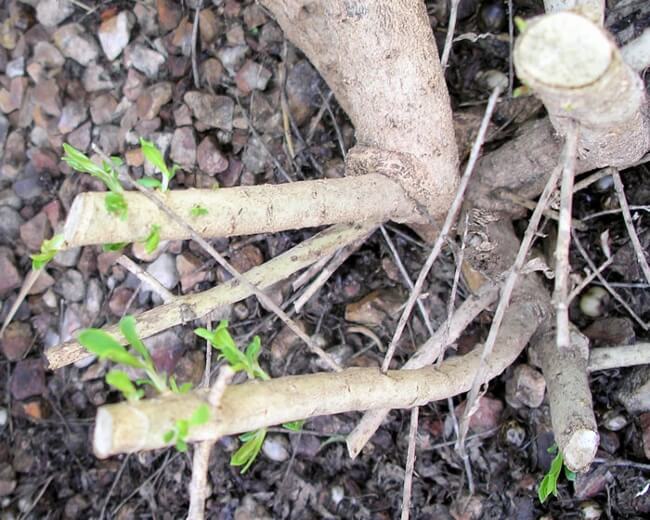
Eremophila 'Winter Gold' is one Australian Native Plant that responds really well to harsh pruning.

Alyogyne huegelii 2 months after a light prune. It is regrowing well down on the branches that are over 2 years old.
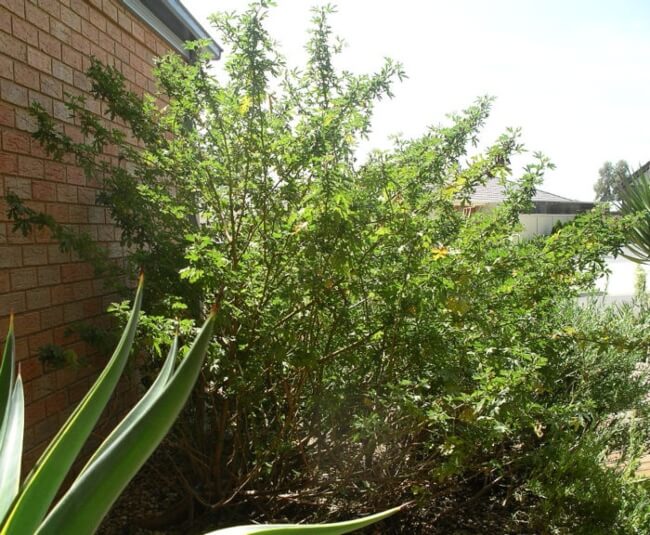
Alyogyne huegelii in late December after it's finished flowering and ready to be pruned.

Alyogyne huegelii after a light prune. If I wanted to I could have taken much more off but in this case I was happy with this amount.
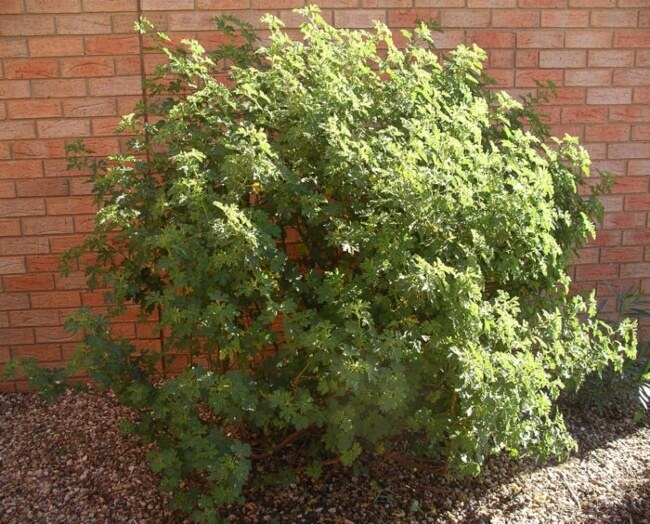
Alyogyne huegelii in late February growing back into a nice compact, dense shrub that will continue to regrow into autumn and then start to form flowers in late winter.
Just as your plant is coming into its normal growing season (spring in most cases) cut back part of the plant (maybe at the rear) right back to some bare wood and then just wait and see if it starts to sprout some new growth. If it regrows you know you can then prune it back really hard if need be and if it doesn’t you know you need to be a bit more conservative with your pruning.
Alyogyne huegelii is one plant that will respond really well to harsh pruning and will regrow from older bare branches. Pruning this plant back really hard is a great way to rejuvenate an older shrub that has rarely been pruned in the past. It will also transform it into a more compact, denser shrub that will flower much more prolifically the following spring.
Pruning Alyogyne huegelii Regularly
If you prune regularly though, then you may just want to prune it back somewhere between a 1/3 to 2/3 depending on your preference. I prune my Alyogyne huegelii each year after it finishes flowering which is normally in about early summer.
Because of this I normally only have to prune off about 1/3 but if I wanted to I could have taken off quite a bit more.
So if you’re not sure how much you can prune your particular plant back then experiment. All plants are different when it comes to how hard you can prune them but once you work out what’s best for a particular plant then you can go about it more confidently and as a result you’ll end up with a much more compact plant that will look more attractive, will most likely be more wind resistant, may even live longer and best of all will flower so much more prolifically the following year.
And finally remember this, when you do prune your plants they can look a little bare for a little while afterwards (something like when you get a bad haircut maybe?). But most Australian Natives will grow back fairly quickly so when it comes to the decision of whether to prune or not to prune, I can only say this…
I always prefer a plant that will look a little strange for a month or two and then look fantastic for the rest of the year as opposed to one that’s not pruned at all and just looks average (at best) for the whole of the year.
So next time you’re at the garden centre keep an eye out for Alyogyne huegelii.
Published on June 24, 2023 by AGT
Last Updated on February 14, 2024




